PERSEPOLIS | Ask most people what they think when you say the word “Persepolis” and you’ll generally get one of 2 reactions. The respondent will either reply that they have never heard of the place, or will tell you that they know it is one of the most historical ancient sites in the world. The ruins of the capital of the once mighty Persian Empire date back to 515 BC and are certainly impressive (you can read about my experience here), however that is not the purpose this piece.
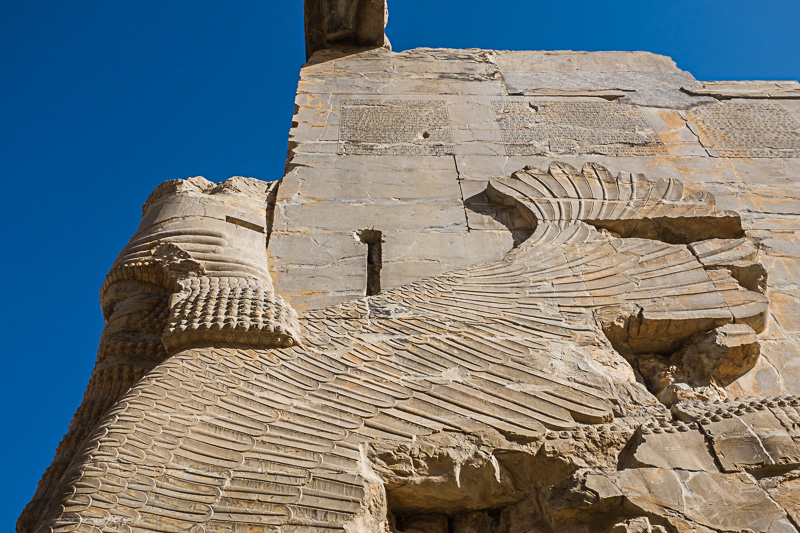
When I visited Persepolis I was quite aware of its cultural importance but as soon as I walked through the huge Gate of All Nations, I noticed something quite unexpected… old graffiti. I’m not talking about graffiti dating back to the time of the Persian Empire, but rather graffiti engraved into stone by more recent visitors from several hundred years ago, often with quite intricate typeface. Back before a sensibility for the preservation of historical monuments became common place (let’s not try and think about the destruction that Isis is wreaking on Syria at the moment) it was not uncommon for visitors to ancient sites to carve graffiti into the monuments. Having said that, it’s not something that I’ve seen very often in my travels.
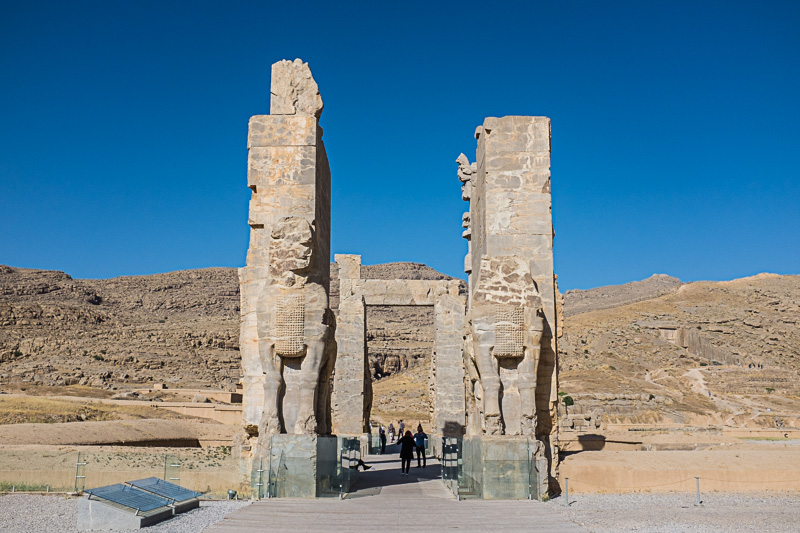
Looking at the graffiti, I couldn’t help but wonder who these people were, that wanted to leave a permanent mark of their visit for future visitors to see. I told myself that I would try and find out a little about each person if I could when I got home. Here’s what I discovered.
Félix Marie Charles Texier (1802-71)
Charles Texier was born in Versailles in 1802 and was a French historian architect and archaeologist. He studied in Paris and is most famous for his discovery of the ancient Hittite capital of Hattusa during his expedition of Asia Minor in 1834. His second expedition took him to Armenia and Mesopotamia, before ending in Persia in 1840. Later on that year, he became deputy professor of archaeology at the Collège de France.
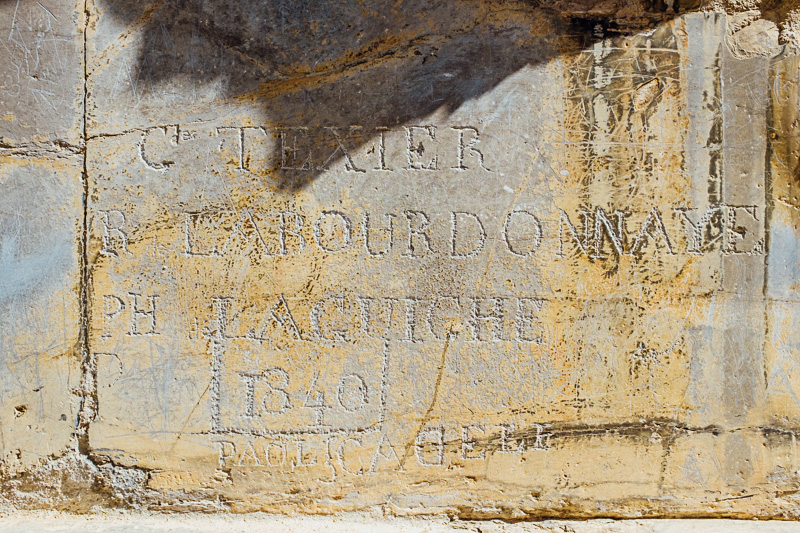
Major-general Sir John Malcolm GCB, KLS (1769-1833)
The heavily awarded Sir John Malcolm was a Scottish soldier, diplomat, East India Company administrator, statesman, and historian. One of 17 children born to a poor farmer, he left his home and family at the age of 13 to become and ensign in the East India Company’s Madras Army. He served for 11 years as a regimental soldier before following his passion for politics and governance. He arrived in Persia in 1810 and spent 2 years there, learning much about the country. He spent the next 5 years in England, writing his History of Persia, the first ever English language Persian history book derived directly from Persian sources.
In subsequent years, Malcolm split his time between India and England, and had a variety of roles including ruler of Central India, Governor of Bombay, and Member of Parliament in Britain.
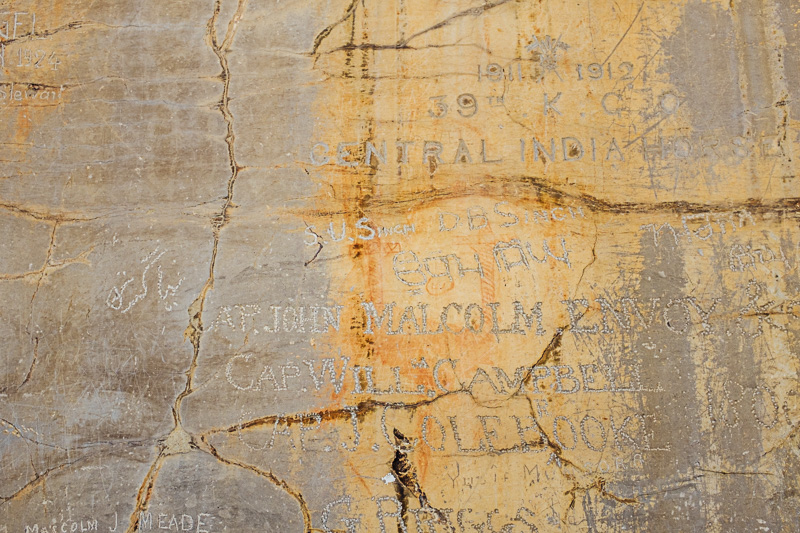
Samuel Manesty (1758-1812)
Samuel Manesty was a merchant and diplomat. Not much is known about his past, but he is infamous for his “unauthorised venture” to Tehran as an envoy from the Governor-General of Fort William and Bengal to the Shah of Persia. On 20 July 1802 The Shah’s ambassador was accidentally shot and killed in Bombay. Fearing the Shah’s reaction, the Governor-General drafted a letter of apology which was to be delivered by the Bushire (Persian Gulf) Resident, Jonathan Henry Lovett, but instead was delivered by Manesty, the resident of Basra in Iraq.
Lovett, had heard rumours that whoever delivered the letter would be beheaded, and to Manesty that they change places. They informed London but put their plan into action before receiving a response. Manesty met the Shah in Soltaniyeh on 2 July 1804, with quite an entourage that he had assembled along the way. He was not shy about boasting of his achievements and, considering himself to be the natural successor to Sir John Malcolm, wrote to the Prime Minister in London and the Chairman of the East India Company along with several other prominent individuals.
Upon his return to Basra, Manesty learned that the Governor-General was refusing to pay his expense claims due to the unauthorised nature of the mission. Lovett was sacked for exceeding his orders but Manesty managed to keep his job until 1809 when, after several complaints against him of insubordination, he was dismissed. He returned to London on 17 May 1812, disgraced and destitute and a month later he died, allegedly having committed suicide.
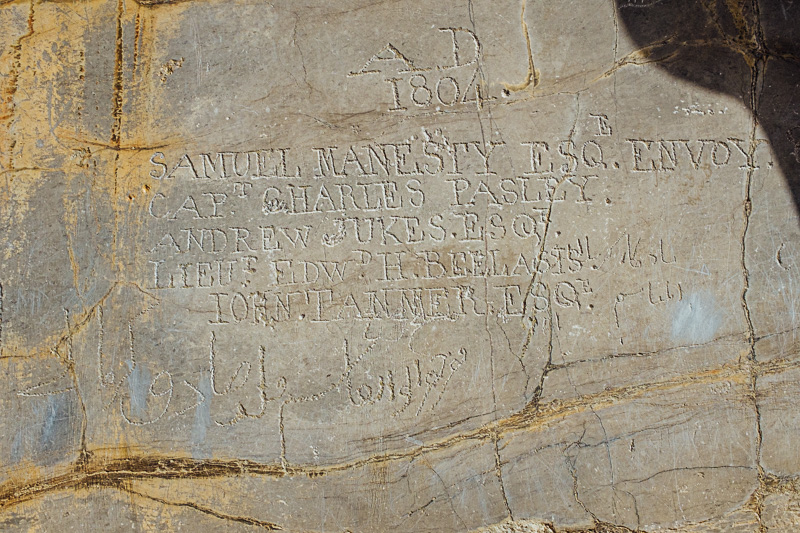
Count Széchenyi András Andor István Mária Béla de Sárvár-Felsővidék (1865-1907)
Count Andor Széchenyi was the grandson of the famous Count István Széchenyi, one of the greatest statesmen of Hungarian history. The nobleman and traveller Andor had no acheivements as such to his name, but did travel extensively. His journeys took him to islands of the Pacific Ocean, Somaliland, to China across Russia, Persia and India. He had his travelogues published by the Geographical Society of Vienna.

Henry Morton Stanley (1841-1904)
Henry Morton Stanley was a Welsh journalist and explorer, most famous famous for his exploration of central Africa and his search for missionary and explorer David Livingstone, where upon finding his man he allegedly uttered the famous words “Dr. Livingstone, I presume?” He was born as John Rowlands in 1841, given up by his mother at birth and never knew his father. He grew up in a workhouse until at the age of 15, he left to become a teacher. At the age of 18, he set sail for the United States to start a new life, started speaking with an American accent, and changed his name to Henry Morton Stanley, after a wealthy trader who became both his boss and a father figure.
His adventures were numerous – He fought in the American Civil War, both in the Confederate Army and, after his capture, as a “Galvanized Yankee” in the Union Army; led a failed exhibition to the Ottoman Empire and had to talk his way out of prison; travelled to Zanzibar to find missing explorer David Livingstone, researched the Congo and Nile rivers and claimed the Congo for the Belgian King Leopold II. He developed a reputation as a hard man, including charges of indiscriminate cruelty against Africans.
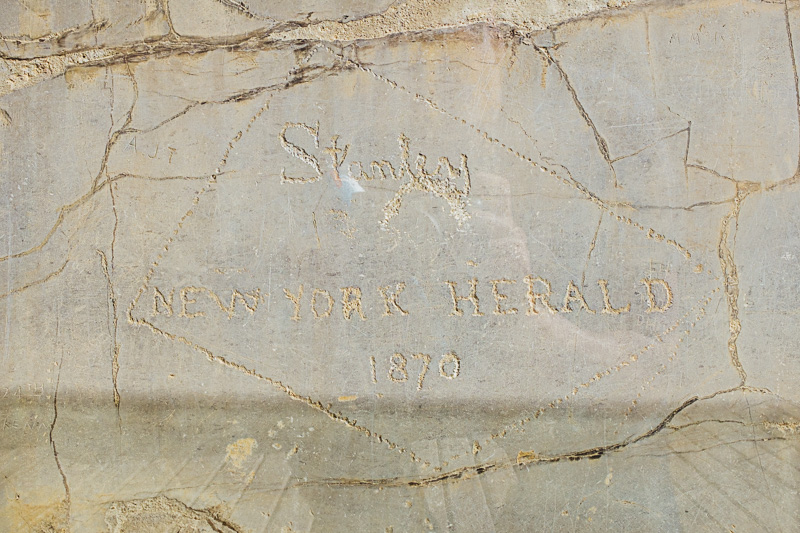
Corragon, Louis CROS
I have not been able to find any information about Corragon and Louis. It may even be one person.
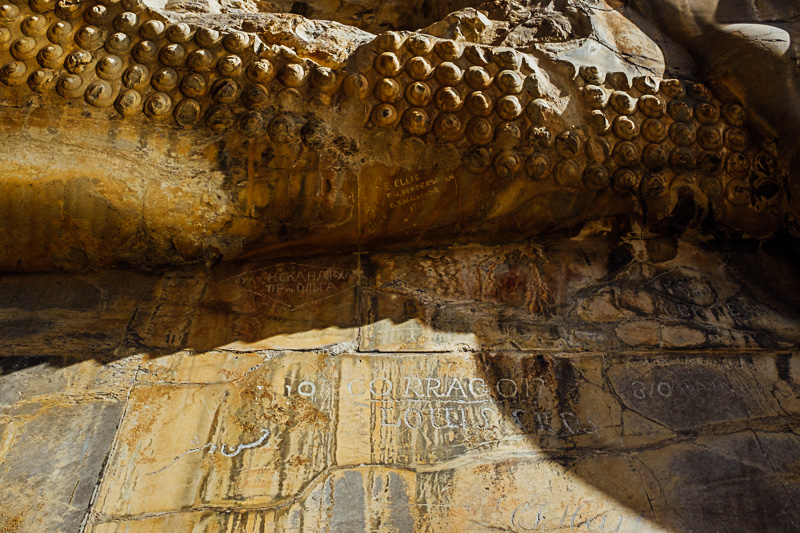
S. R. Willock
While the more famous Major George Willock and his brother Henry of the Madras Cavalry also have graffiti at Persepolis which dates back to 1826, I have been unable to find anything about the earlier S. R. Willock, other than the fact that he accompanied Sir John Malcolm on his visit to Persepolis in 1810.
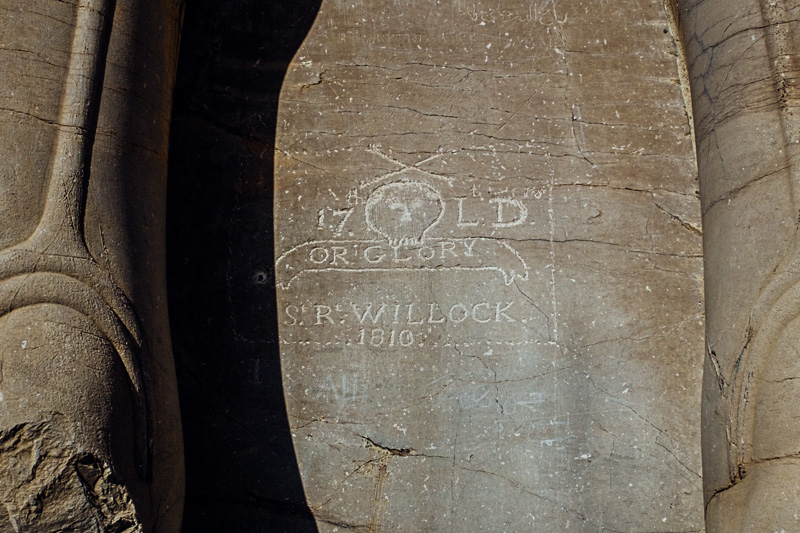
George Higgs, J Crampton, J B Marrige, William Lundt
I cannot find any information about these 4, other than the fact that they all travelled on an expedition led by J Crampton in 1810.
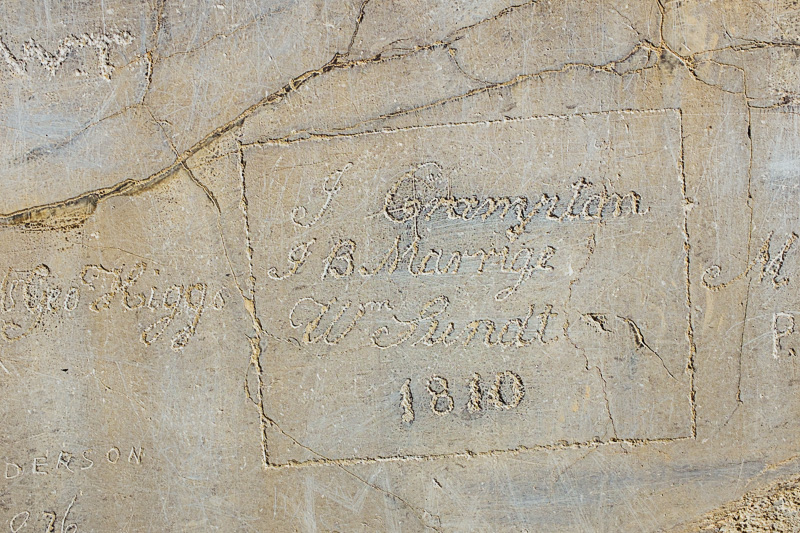
Duvell
I have been unable to find any information about Duvell.
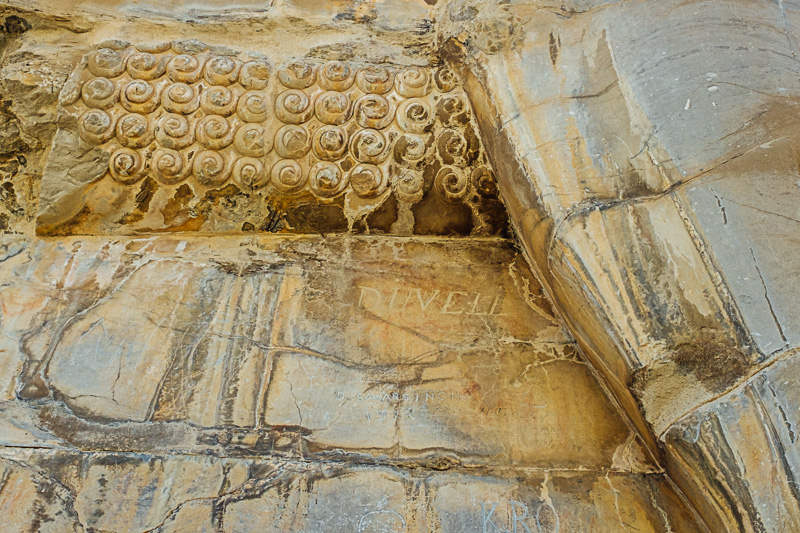
I am 100% for the preservation of ancient artefacts and don’t agree with the defacing of the monuments that occurred at Persepolis, but I’d be lying if I didn’t say I was fascinated by the stories behind these names and their context in history. Have you seen any old graffiti on your travels? What do you think about it? Do you have any information about those who I haven’t been able to find anything about?

